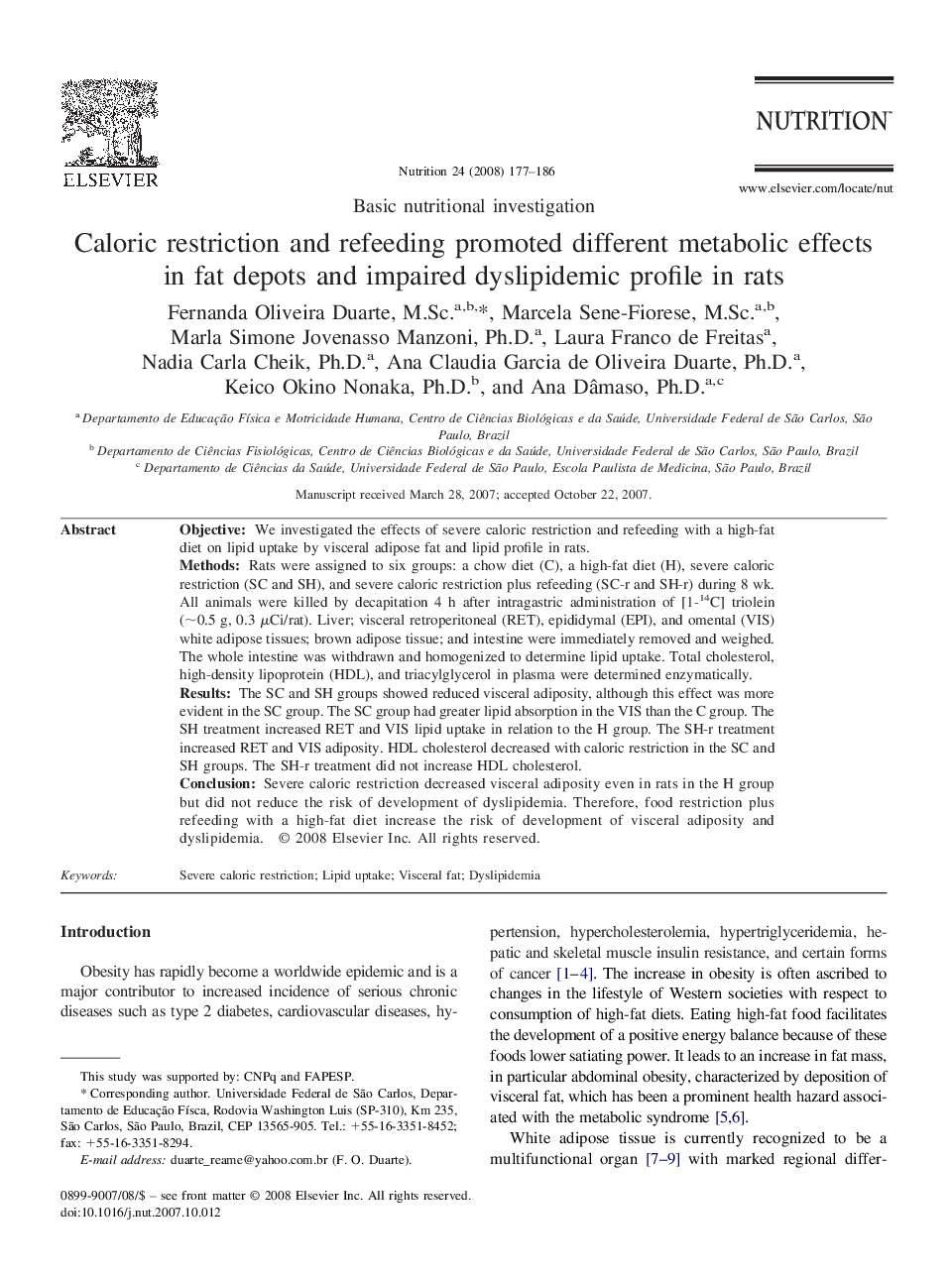| Article ID | Journal | Published Year | Pages | File Type |
|---|---|---|---|---|
| 3277213 | Nutrition | 2008 | 10 Pages |
ObjectiveWe investigated the effects of severe caloric restriction and refeeding with a high-fat diet on lipid uptake by visceral adipose fat and lipid profile in rats.MethodsRats were assigned to six groups: a chow diet (C), a high-fat diet (H), severe caloric restriction (SC and SH), and severe caloric restriction plus refeeding (SC-r and SH-r) during 8 wk. All animals were killed by decapitation 4 h after intragastric administration of [1-14C] triolein (∼0.5 g, 0.3 μCi/rat). Liver; visceral retroperitoneal (RET), epididymal (EPI), and omental (VIS) white adipose tissues; brown adipose tissue; and intestine were immediately removed and weighed. The whole intestine was withdrawn and homogenized to determine lipid uptake. Total cholesterol, high-density lipoprotein (HDL), and triacylglycerol in plasma were determined enzymatically.ResultsThe SC and SH groups showed reduced visceral adiposity, although this effect was more evident in the SC group. The SC group had greater lipid absorption in the VIS than the C group. The SH treatment increased RET and VIS lipid uptake in relation to the H group. The SH-r treatment increased RET and VIS adiposity. HDL cholesterol decreased with caloric restriction in the SC and SH groups. The SH-r treatment did not increase HDL cholesterol.ConclusionSevere caloric restriction decreased visceral adiposity even in rats in the H group but did not reduce the risk of development of dyslipidemia. Therefore, food restriction plus refeeding with a high-fat diet increase the risk of development of visceral adiposity and dyslipidemia.
